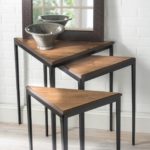
Flooring Table Top
Use leftover faux hardwood flooring to make table tops for used thrift store finds! Give old furniture a classy makeover.
Servings 3 tables
Cost $25
Equipment
- 1 Router and bit(s) round over bit
- Utility scissors
Ingredients
- Vinyl flooring enough to cover your table top
- Titebond III Ultimate Wood Glue
- Painter's tape
- Spray paint for table legs
- Wood stain or paint for tabletop edges
Instructions
- Before you begin, sand down any peeled up laminate or chipped wood areas on your tabletops using your orbital sander.
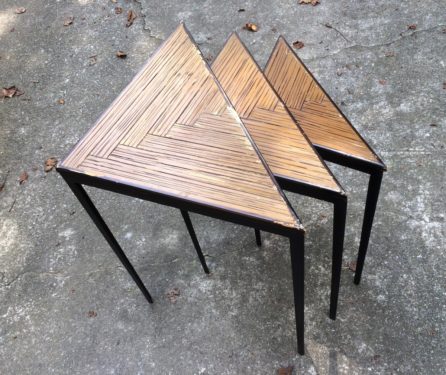
- Use utility scissors to cut the vinyl floor down to a size that is slightly larger than the table top you wish to cover. This is just so you aren't working with long pieces that are flapping around.
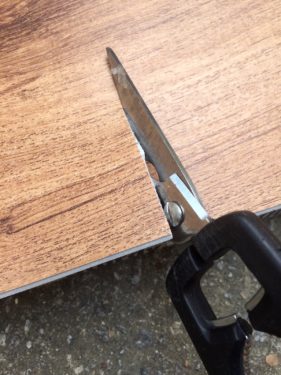
- Join the flooring planks together and use painter's tape to hold them in place when you flip them over. Make sure you join enough pieces to cover the width of the tables, and overhang a bit.
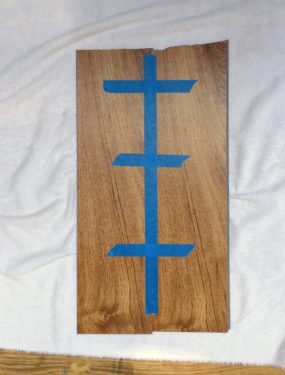
- Remove the table top from the legs if possible. Put a strong glue (Titebond III) on the table top as shown; flip over onto the upside-down flooring planks.Let glue dry according to instructions on the glue bottle.
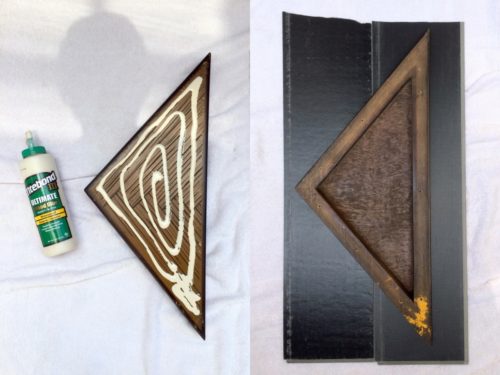
- Using utility scissors, trim off the excess flooring leaving a ¼” to an ⅛” overhang all the way around.
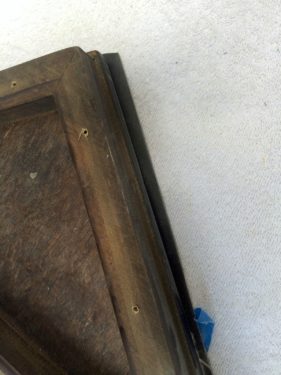
- Use a router with a round over bit to remove the excess flooring and clean up the tabletop edges.
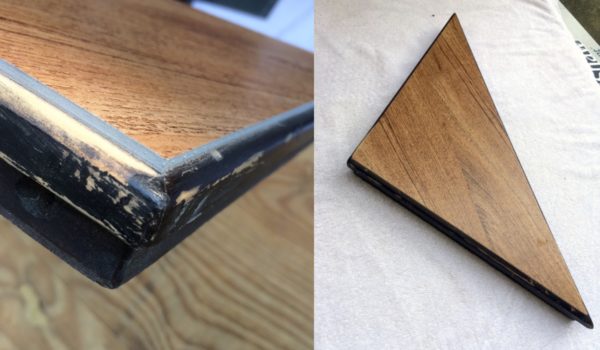
- While the legs are detached, clean and sand any areas that need it - then spray paint with a tough spray paint.
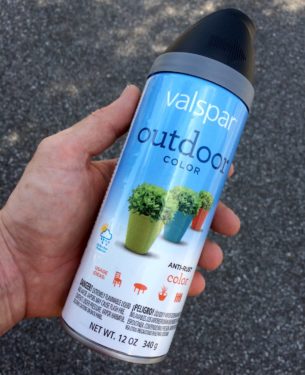
- Use painters tape to mask off the new table surface, then paint or stain the edges as needed. We used a brown acrylic paint that was between the tabletop and the legs.Let your tabletops dry and then reattach them to the legs.
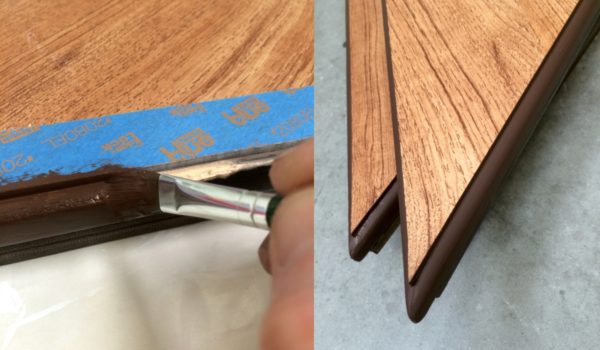
Notes
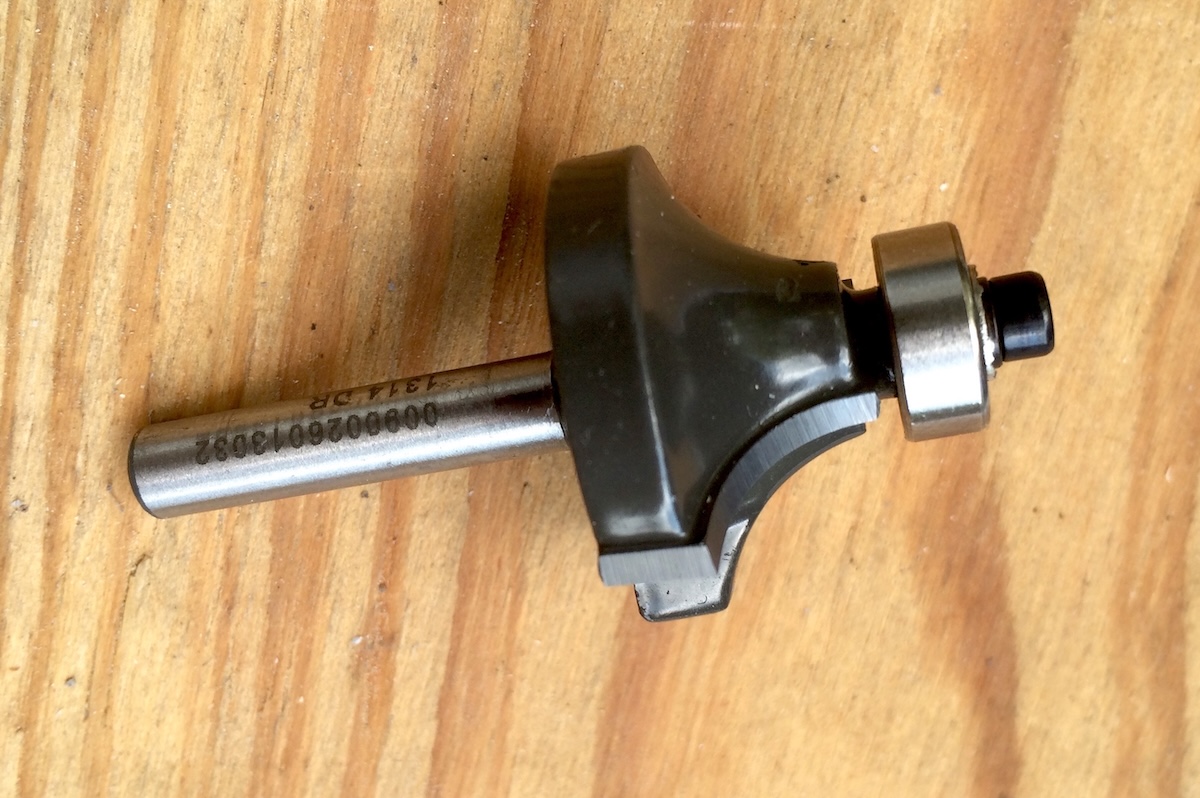 The round over bit is pictured above and you can learn more about it (and how to use it) here.
The round over bit is pictured above and you can learn more about it (and how to use it) here.